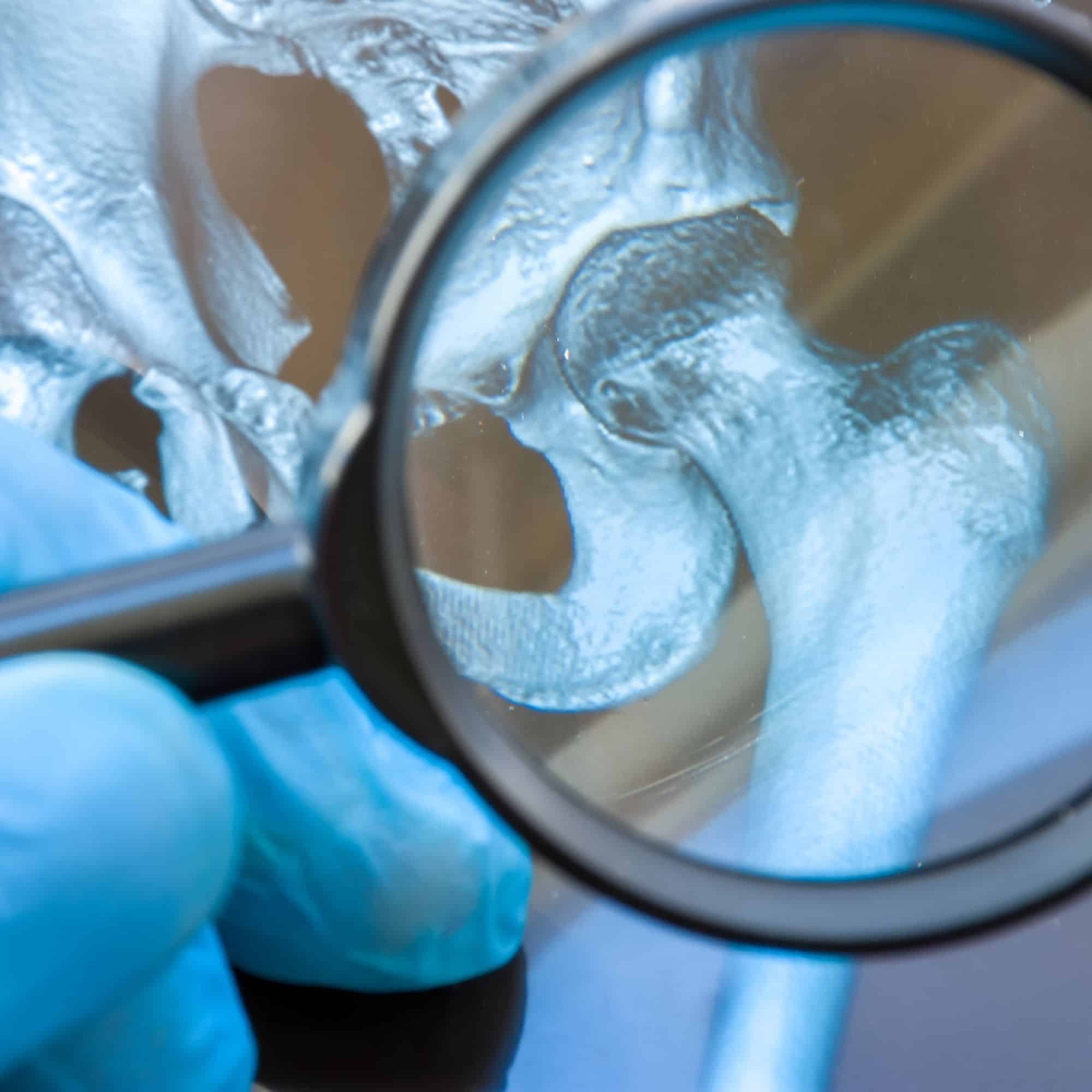Core Decompression for Avascular Necrosis of the Hip
The hip joint is a ball and socket joint, where the head of the thigh bone (femur) articulates with the cavity (acetabulum) of the pelvic bone.
Sickle cell disease, a group of disorders that affect the hemoglobin or oxygen-carrying component of blood, causes avascular necrosis or the death of bone tissue in the hip due to lack of blood supply.
Avascular necrosis commonly affects the head of the femur. Necrosis leads to tiny cracks on the bone which finally causes the head of the femur to collapse. The condition causes pain due to increased pressure in the blood vessels of the bone marrow at the region of the necrosis.
Early stages of avascular necrosis can be treated by core decompression surgery, which reduces pressure, promotes blood flow, and encourages healing of the bone.

Indications
Core decompression is indicated in the early stages of avascular necrosis when the surface of the head is still smooth and round. It is done to prevent total hip replacement surgery, which is indicated for severe cases of avascular necrosis and involves the replacement of the hip joint with an artificial device or prosthesis.
Surgical Procedure
Core decompression is done under spinal or general anesthesia. The patient is placed on their back in the supine position. Live X-ray imaging or fluoroscopy is used to guide your surgeon during the procedure.
A small incision is made on your hip and a guidewire is passed from the incision through the neck of the femoral bone to the necrotic area in the femoral head. A hole is then drilled along the wire. The necrotic bone is then removed. This reduces the pressure immediately and creates space for the new blood vessels to grow and nourish the existing bone.
The cavity that is left behind in the bone is sometimes filled with bone graft taken either from another part of your body or a cadaver. Sometimes synthetic bone graft material is used. The incision is then closed with sutures. Another variation of the same surgery involves drilling very small diameter holes from a single point. The surgical wound, in this case, is very small and may require only a single suture.
After Surgery
After surgery, you will feel pain. This is completely normal and part of the healing process. Your doctor and nurses will work together to reduce your pain, this will help you recover faster.
Prior to you leaving the hospital your doctor will send a prescription to your pharmacy for some short-term pain relief after surgery. Your doctor may suggest multiple medications to help manage your pain, such as opioids, non-steroidal anti-inflammatory drugs (NSAIDs), and local anesthetics. Your doctor will discuss which options or combinations would be best for you.
Opioids
At MD West One, your health is always a top priority, which is why we are very passionate about getting you back to full activity in a safe and timely manner. We understand every patient is unique when it comes to pain management. A key component of a successful pain treatment plan includes weighing all risks and benefits to find the pain treatment plan that best fits you.
A high risk of dependence and overdose is associated with the use of opioids. To avoid this from accruing our agreement with you:
- You should take all medications as ordered by your provider. If you take the medication in excess of what is prescribed and run out of the medication prior to the refill date, the refill will not be authorized early.
- If you are requiring a refill of your prescription please call during regular business hours. Our providers will not refill any pain medications over the weekend, holidays, or after clinic hours.
- Make sure to tell your physician or nurse which medications you are taking, including herbal remedies, since narcotic medications can interact with over-the-counter medications and other prescribed medications, especially cough syrups that contain alcohol, codeine, or hydrocodone.
- Alteration of any written prescription, sharing, trading, or selling your medication is a federal offense and will be reported.
- You are responsible for keeping your pain medication in a safe and secure place, such as a locked cabinet or safe. Stolen medications should be reported to the police and to your physician immediately.
- If your medications are lost, misplaced, or stolen, your physician may choose not to replace the medications or to taper and discontinue the medications.
Post-Operative Care
After the operation, crutches are to be used for 6 to 12 weeks to prevent weight bearing at the hip joint until the femur bone heals completely. You will be able to resume your regular activities 3 months after the surgery.
Advantages
The advantages of core decompression include the following:
- Prevents complications of collapse of the femoral head
- Preserves bone of the femur
- Delays the need for total hip replacement where the diseased femur head is replaced with an artificial prosthesis.
Risks and Complications
As with all surgeries, core decompression may be associated with certain complications such as:
- Fracture along the core track
- Perforations in the femoral head
- Deep vein thrombosis
American Academy of Orthopedic Surgeons
This article has been written and peer-reviewed by the American Academy of Orthopaedic Surgeons.
